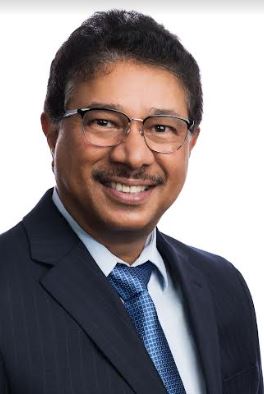
By Raghwa Gopal, CEO of M Square Media
Pursuing higher education in the US is an aspirational dream cherished by many, across generations. This allure hasn’t faded away with time, even after the emergence of newer international education destinations, some of which may be affordable as compared to the US or offer better chances to take up work during study or after its completion.
Overall, it’s estimated that about 1,057,188 international students were studying in the United States (US) in the academic year 2022-23. Indian students are the second largest group there, after their Chinese counterparts. As per the Open Doors Report (ODR) released in November 2023, the number of international students from India studying in the United States stood at 263,923 – a 35% increase from 2021-22 to 2022-23. Most of these students – 165,936 – were pursuing graduation in the US.
Higher education in the US has long been hailed as a pathway to academic success, opening doors to global jobs, pursuing industry-leading research, and learning new-age programs. However, the hefty tuition fee in the US is the biggest roadblock for students, overriding other concerns such as visa, accommodation, travel arrangements, adjusting to a new academic set-up, and different societal norms.
The US ranks as the most expensive country to seek higher education. Studying at the most notable US universities comes at a premium. For example, the average tuition fee at New York’s Columbia University is around $80,000. Known for its path-breaking research, it counts Barack Obama among many of its notable alumni. The average fee at Duke University – the alma mater of Tim Cooks – roughly stands at $78,000. Of course, these would vary from program in consideration and city of education, among other aspects.
These stats may seem overwhelming; thankfully, today several student loans and other finance options are easily available. As a former international student myself, my strong advice is to look for solutions (in this case, financial aid options) instead of mulling over the cost of education.
Understand one core fact that just like other commodities and services, education costs too rise with time. Volatile geo-political situations, the difference between the Indian Rupee and the US Dollar, changing visa norms, additional riders, and other unexpected expenses are the traditional game spoilers for students seeking education in the US. My suggestion is to see the other side of the coin. Begin as follows:
Plan early: Typically, universities in the US have three different intakes: January/Spring, May/Summer and September/Fall. Plan much in advance to grab a program at your dream university. While you start planning for intakes, do thorough research on overall education costs to understand the outcome better.
Create a budget: Develop a realistic budget based on your lifestyle. Other than tuition fees, accommodation, meals, transportation, communication, and personal expenses – also include aspects such as research and educational items, gadgets, and health insurance.
Speak to counselors: Consult trusted experts such as MSM Unify advisors or other certified experts in advance. Understand well the fee structures of the chosen universities. Seek advice on the most affordable and popular choices available to students like you.
Competitive student loans: Education loans are a popular tool to fund your education. Look for a loan where payment terms and duration are relaxed as compared to the other alternatives.
Scholarships: Scholarships and grants are valuable resources for students. Conduct thorough research to identify scholarship opportunities offered by colleges, private organizations, respective governments and community groups. Some of the popular scholarships for Indian students seeking the US education are:
• Tata Scholarship
• AAUW International Fellowships
• Inlaks Shivdasani Foundation Scholarships
• Clarendon Scholarships
• Felix Scholarship
• Stanford Reliance Dhirubhai Fellowship
• Fulbright Scholarship
Work opportunities: Many US universities allow students to work while studying, though these come with riders. Many students choose to work part-time jobs to help cover their living expenses and ease the education loans. Here are some ways to consider work while studying:
– Paid internships
– Part-time jobs
– Assistants
– Volunteering (though these may not be paid, but still offer good industry exposure)
Network to seek solutions: This is my best bet. Speak with other Indian students who are presently studying in the US to understand their journey. It will have cues for you and show you many new perspectives. Also, connecting with fellow students who want to pursue US education just like you will help. Together, all of you could create a pool of information and resources that would make your international education easier and a lot more fun.
Planning for higher education in the US involves navigating a complex landscape of costs, financial aid options, and potential challenges. Hence, by developing a comprehensive financial plan, exploring all available resources, and proactively addressing obstacles, students can overcome financial barriers and pursue their educational goals with confidence. Remember, with determination, resourcefulness, and support, higher education in the US can become a reality.

